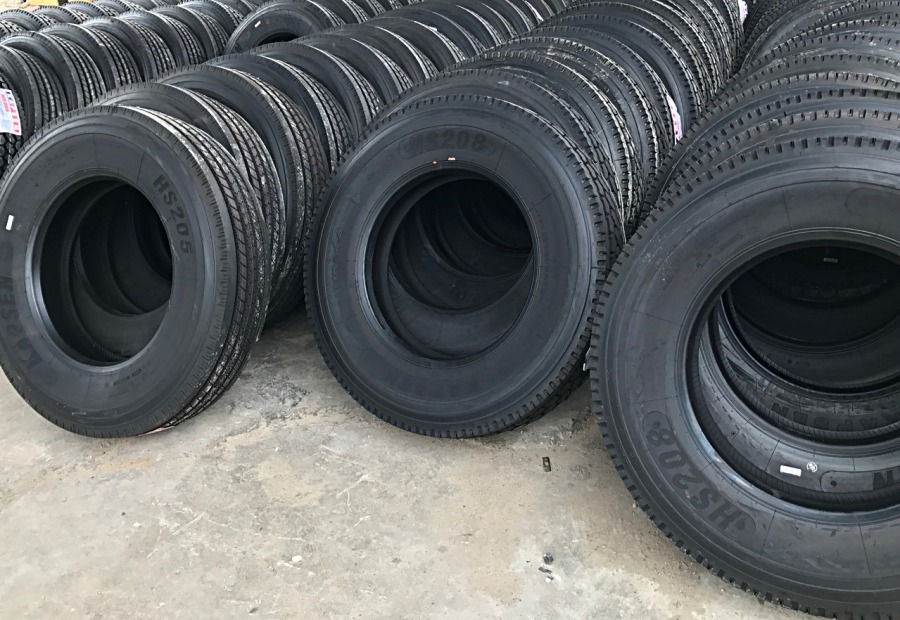Picking appropriate tires for your semi-truck is crucial to guaranteeing safety, efficiency, and longevity while on the road. Considering different loads and changing routes, demands placed on tires can change significantly based on what cargo being hauled. If you are transporting heavy equipment, perishable goods, or construction materials, understanding the nuances of tire selection can make a significant difference in performance and cost-effectiveness.
In this post, we will explore how to choose optimal tires for your semi-truck based on the specific freight and routes. Beginning with analyzing different tire types and brands to identifying the signs that indicate it’s time for a replacement, we will provide key insights to help fleet managers and truck drivers reach informed decisions. Additionally, we will explore the impact of tire choice on fuel efficiency, safety, and maintenance, making sure that your operation runs efficiently and economically.
Choosing Tires to Suit Freight & Journeys
Choosing the best tyres for semi-truck starts with comprehending the category of load you are going to be transporting. Various categories of cargo require distinct tire requirements. As an example, if you are carrying heavy freight, you'll need tyres that can handle higher load ratings and offer improved resilience. On the other hand, when your load is not as heavy and more lightweight, you may emphasize enhancing fuel efficiency through minimal drag tires, which can help reduce spending over long journeys.
Also vital is the consideration of your regular paths. If you mostly drive on highways, tyres designed for long-distance travel will offer better effectiveness, offering smoother drives and extended tire longevity. In contrast, if your routes involve rugged or rough ground, it’s essential to pick tires with suitable tread styles that can tackle diverse conditions while offering adequate traction. Knowing the types of roads you'll often face can significantly impact your tyre decision.
Finally, don’t forget to consider the effects of seasons variations that may affect your driving paths. For instance, when you drive in regions that experience harsh winter conditions, equipping your semi-truck with snow tires can enhance traction and handling in frosty or wintry weather. All-season tires can be adequate for less severe weather, but they may not deliver the equivalent level of security and efficiency in severe weather. Customizing pneus camion lourd prix to both your freight and routes is vital for sustaining reliable and efficient operations.
Tire Management & Management
Routine tire care stands crucial for ensuring the well-being and efficiency of your semi-truck. Adequate tire pressure remains a key the most crucial factors. Under-inflated tires can lead to more wear and tear, decreased fuel efficiency, and increased risk of blowouts. It is important to check the tire inflation frequently, using a quality gauge, to verify that it meets the maker's specifications, especially prior to long-distance travel or following driving over challenging terrain. Additionally, make sure to inspect the tread depth and general state of the tires to discover any issues early.
An additional vital aspect of tire management includes changing positions. How often should you change semi-truck tires? Typically, tires should be rotated about 5,000 to 8,000 miles, though the frequency may vary based on application and wear characteristics. Switching the tires assists encourage even wear across all tires, extending their duration and reducing the risk of uneven wear, which can lead to expensive replacements. Frequent inspections and rotations can help you spot signs that it is time for changing your semi-truck tires, guaranteeing you maintain a secure and effective fleet.
Additionally, keeping detailed records of tire upkeep is beneficial for fleet management. Recording tire pressure monitoring, rotations, changes, plus all troubles encountered can provide valuable insights concerning the performance of your tires. This record allows you track how tire decisions impact your semi-truck’s fuel efficiency in the future and aids in making smart decisions about buying new tires or retreads. Efficient tire management enhances safety but also helps in minimizing operational spending, in the end contributing to the success of your trucking operation.
Assessing Tyre Performance Characteristics and Technological Aspects
When choosing tyres for your semi-truck, it is vital to evaluate their performance and the technology behind them. Tire performance can markedly affect your rig's handling, traction, and overall security. Key elements to take into account include tread design, rubber makeup, and the specific attributes that enhance endurance and efficacy under multiple load conditions. Innovative manufacturing techniques have led to developments such as refined tread patterns that maximize grip on both wet and solid surfaces, which can be particularly advantageous for different cargo types and weather conditions.
Technology plays an ever more important role in tire management and safety. Smart tires equipped with Tire Pressure Monitoring Systems (TPMS) provide immediate data on tire health, helping drivers track pressure and heat to avoid blowouts and ensure maximum performance. Additionally, latest tire advancements often feature enhanced rolling resistance, which can aid in fuel efficiency—a key aspect for long-haul operations. By leveraging such innovations, fleet managers can make informed decisions on tire selection based on their business needs.
Finally, assessing the effectiveness of tire brands and models is important for ensuring long-term value. Investigating actual feedback from other truck drivers can provide information into the longevity and reliability of specific tires when transporting heavy loads or navigating difficult road conditions. Understanding the latest advancements in tire innovation and how they correspond to your semi-truck's requirements will help you choose tires that not only meet legal standards but also improve your fleet's productivity and safety on the highway.

